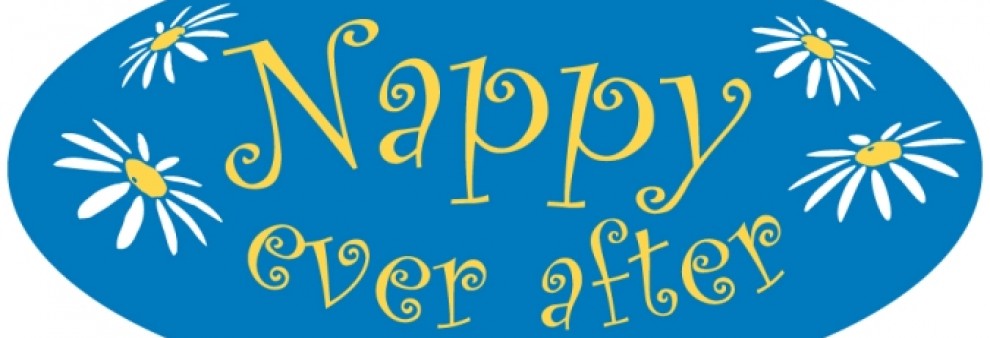At the Nappy Ever After workshops and drop-ins, where we meet customers face-to-face, this is the elephant in the room. No one wants to ask the question, because they don’t want to be rude and imply we sell leaky nappies, and yet it’s what everyone wants to know. So I’ll tell you the honest truth now; yes, all nappies leak, now and again, even disposables.
There are three reasons why reusable nappies may leak :
- Nappies do not fit
- Nappies are left on too long
- Nappies are faulty – either due to washing/drying damage or they were cheap copies of reliable brands
And the glorious news is: leaks with washable nappies are largely preventable:
Fit: the more adaptable the nappy, the less likely it is to leak. Flat nappies such as muslins, terry cloths and pre-folds are the most adaptable. Think of it like the difference between the fit of an off-the-peg dress and one pinned into shape on the cat walk. So flats put on well are less likely to leak. But only if you can put them on properly. Fact: some people can pick up the skill quickly and easily and some people can’t. If you find you don’t have the skill go for a fitted (such as the Motherease Sandy or Geffen fitted) or an all-in-one nappy such as bumGenius V5 or Freetime. These are all designed based on different baby shapes. If your baby has already arrived you can ask the person you are buying from for advice. If you come to Nappy Ever After you can even try different brands on your baby and see for yourself which nappy fits best.
Nappies left on too long: you should change any nappy every 2-3 hours. This is valuable contact time with your baby. It’s an important time of interaction when your baby’s brain is stimulated and wires new pathways i.e. grows. After the very new born stage babies tend to love having their nappy changed. They love to have quality ‘face-time’ with their carer. Give your baby lots of smiles and songs and soon you will be receiving lots of chuckles and chat. Make sure you have a comfortable set up for changing baby. Especially a table at the right height and everything you need for changing in easy reach. If you enjoy nappy changing time, your baby will too! By the way, if you don’t, please don’t suffer alone; this is am indicator that you may have post-natal depression. This is nothing to be ashamed about or afraid of. Seek help.
Also the nappies need to be absorbent enough for the time baby will spend between changes. So for a night nappy, make it extra absorbent by adding a booster – bamboo boosters are great for this as highly absorbent without adding bulk. If your baby is an extremely heavy wetter you may want to try ‘catching’ before you put on the next nappy. Some babies will like you to catch her/his poo and pee from birth up to about 8 months. Basically after you have taken off the nappy hold your baby over a pot or the toilet. If there is something waiting it will come, if there isn’t it won’t. As this skill has largely been lost in the UK since the 1950s you may want to read more about it from Amber Hatch, either on-line or get hold of her book ‘Nappy Free Baby.’
Faulty nappies: if you buy second-hand (and this is something we do recommend because we are passionate about reuse) test each nappy and wrap over the sink before you use them. The nappy part is the cloth and it needs to be absorbent. Poor washing routines can make them stop being absorbent due to (detergent residue or mineral build-up.) Lay the dry nappy in the sink or bath and poor water from a jug onto it. If water runs off the surface rather than soaks in the nappy needs to be stripped of the stuff on the surface that is stopping absorption. There is plenty of good guidance online on how to deal with this problem.
Also test the wraps, this is the waterproof outer that should keep clothes and bedding dry even when the cloth part of the nappy is soaking. Do the wraps up so they form a kind of bowl and hold over sink. Then pour some water into it. Not too much as this will obviously come out of the leg holes. It water is dripping out very quickly from the area between the leg holes then it is likely the wraps are damaged and need to go to the recycling bank. You can also look at the laminate. If it is crazed (fine lines) you may find a few minutes in a very hot tumble dryer will mend the crazing. You can’t lose by trying.
If your nappies are not a well-known brand and they are leaking do the above tests too. Sometimes you may find you can make second-hand or cheap nappies ‘good-enough’ simply by adding bamboo boosters.
All of this I show and tell at demonstrations, so if you can, come along to our shop close to Old Street, open EVERY TUESDAY (except bank holidays) 2-6pm. Once a month we hold Saturday sessions. You need to book here for those. If neither of these work for you then phone or email to arrange an appointment. There is no charge for appointments. There is often someone at the shop outside minimal regular shop hours, but we just want to make sure you do not turn up and find the shutters down!

